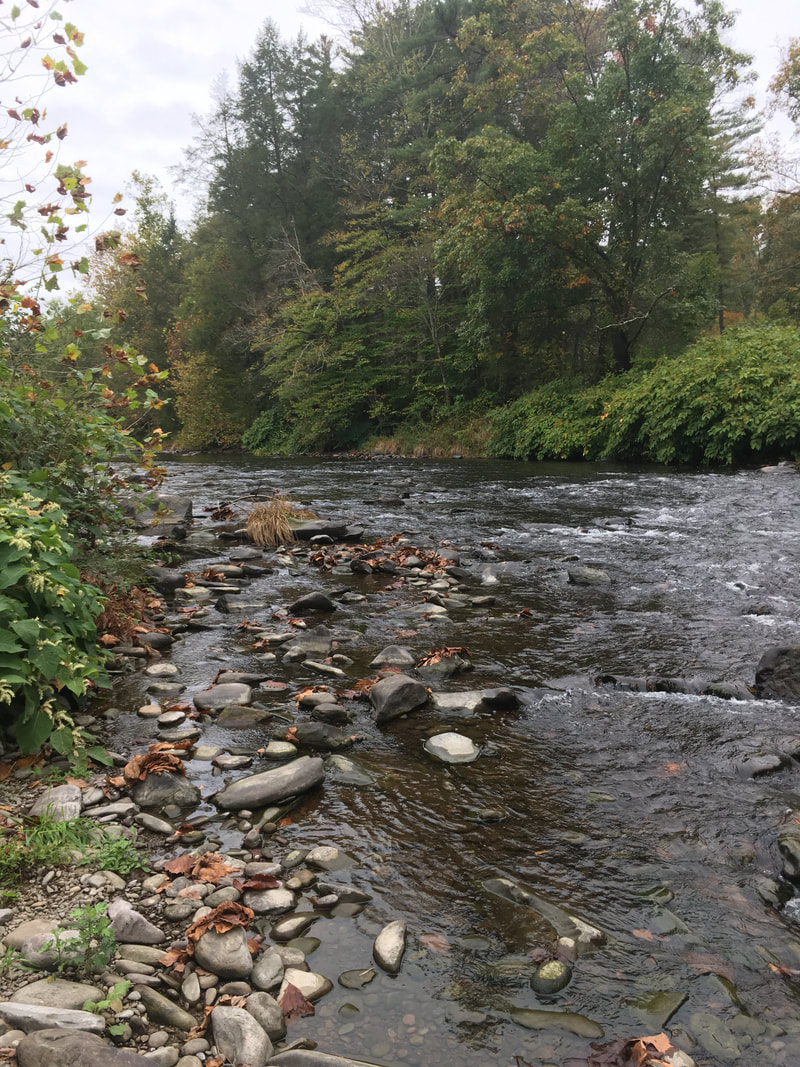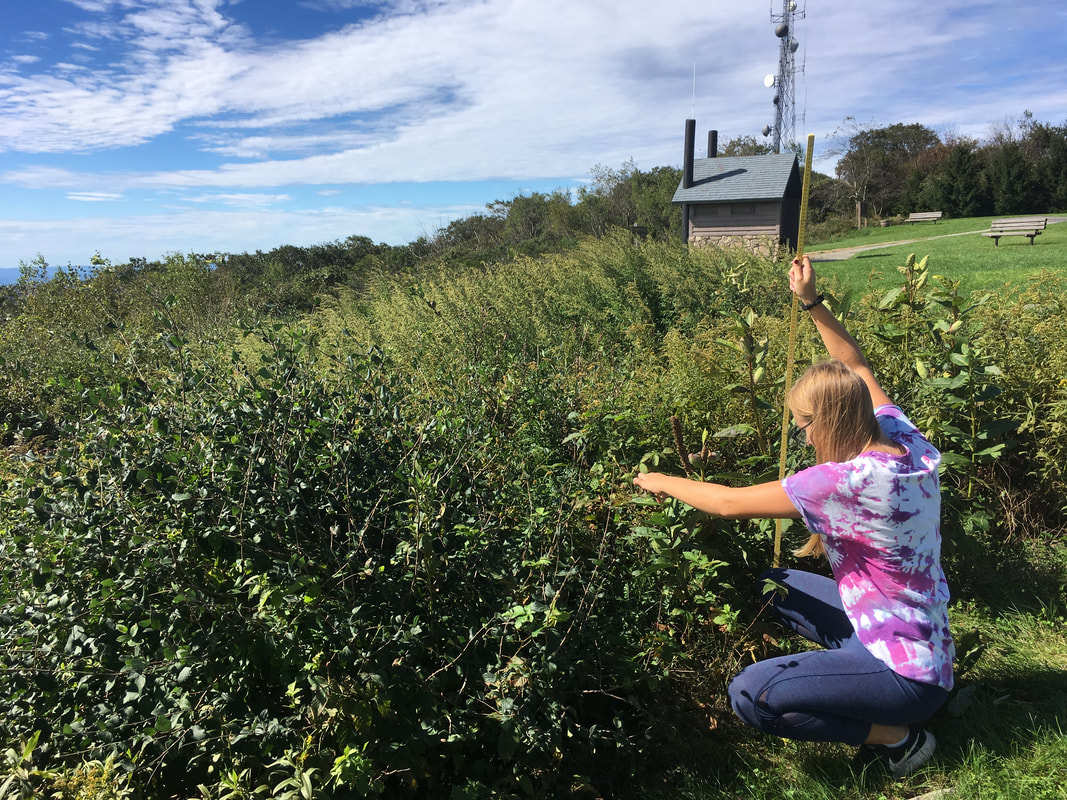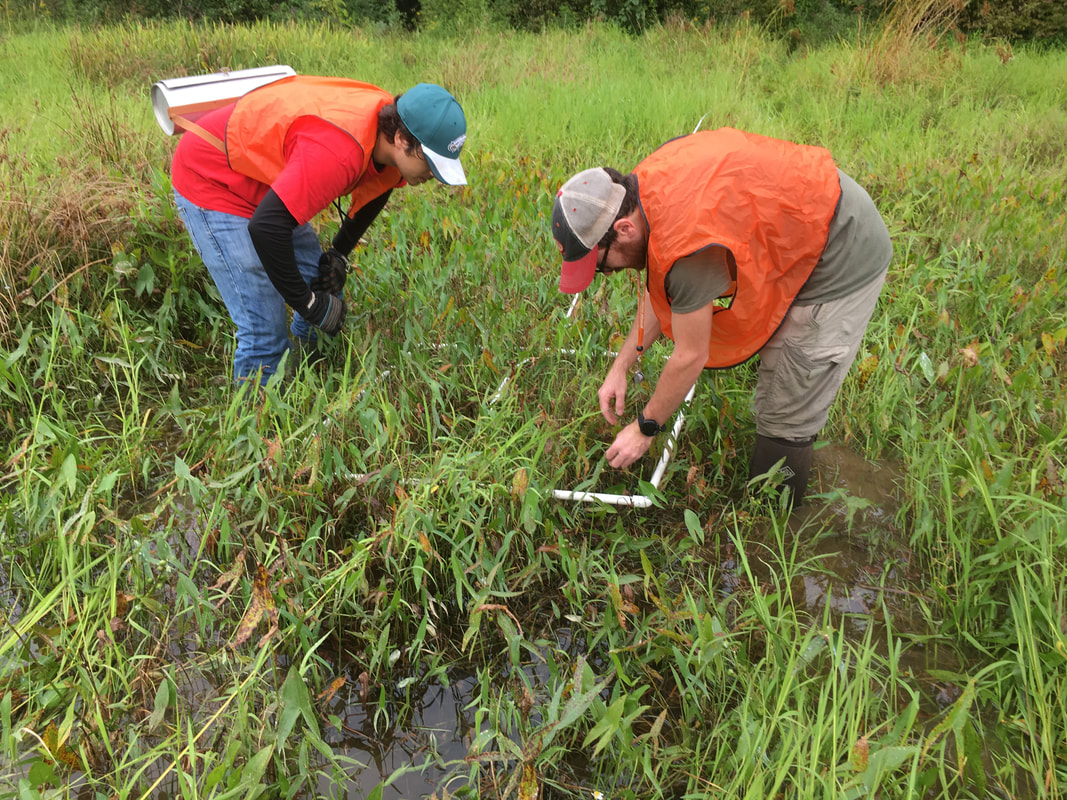|
Local environments
We have a number of ongoing research projects dedicated to better understanding the ecology of our local parks and preserves, intended to provide useful information to land managers at these sites. These research projects are largely integrated into Biology courses (Plant Ecology and Field Botany), as well as independent student research projects. We have been able to work with Stony Acres, a 119-acre wildlife sanctuary affiliated with the university, to establish permanent forest plots and study the regeneration of cleared forest patches over time. Biology students in these classes are also studying regeneration of vegetation at two former golf courses: Cherry Valley Wildlife Refuge and ForEvergreen Nature Preserve. We have also been able to work with The Nature Conservancy to survey floodplain communities scheduled for restoration, with a goal of documenting vegetation changes during that process.
Plant community ecology & biological invasions
The lab's primary research is in plant community ecology, across a range of habitats. We integrate field observational studies and greenhouse experimental approaches to understand what factors govern the organization of plant communities. In these communities, we are often focused on the drivers of biological invasions in these locations, and the relationships of these introduced species to native plant communtiies. We also use plant functional traits to help explain the composition of plant communities and biological invasions in those communities.
Plant-insect interactionsWe have developed several research projects surrounding the ecology of common milkweed (Asclepias syriaca) and other Asclepias species. These include work on the effect of oleander aphids (Aphis nerii) on the relationship between milkweeds and monarch butterflies (Danaus plexippus), and interactions between milkweed and firefly species.
Other recent projectsIn addition to the core research in plant ecology described above, we contribute to a wide range of research endeavors in ecology and evolution, including the influence of prescribed burns on Pennsylvania fauna and flora, prevalence of tick-borne diseases in northeast PA tick populations, distribution of an uncommon bat species in the Delaware Water Gap, and modelling of nesting locations in broad-winged hawks.
|


